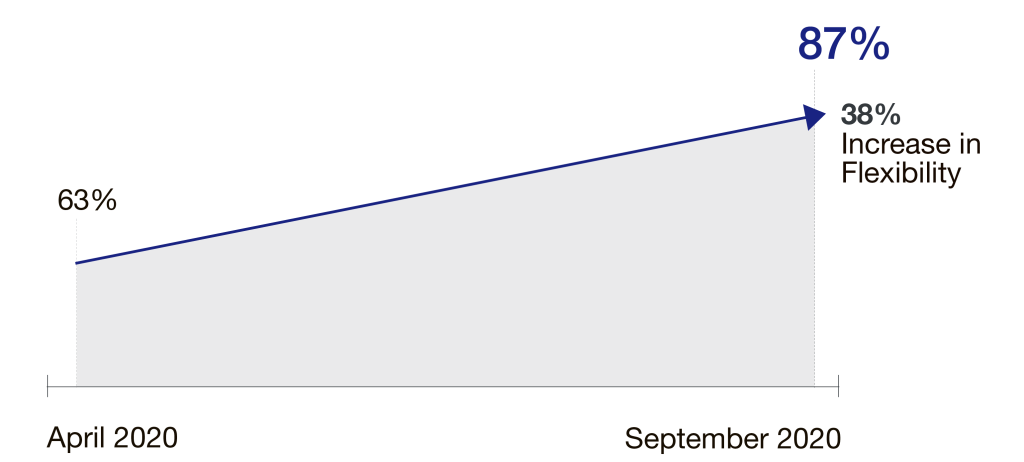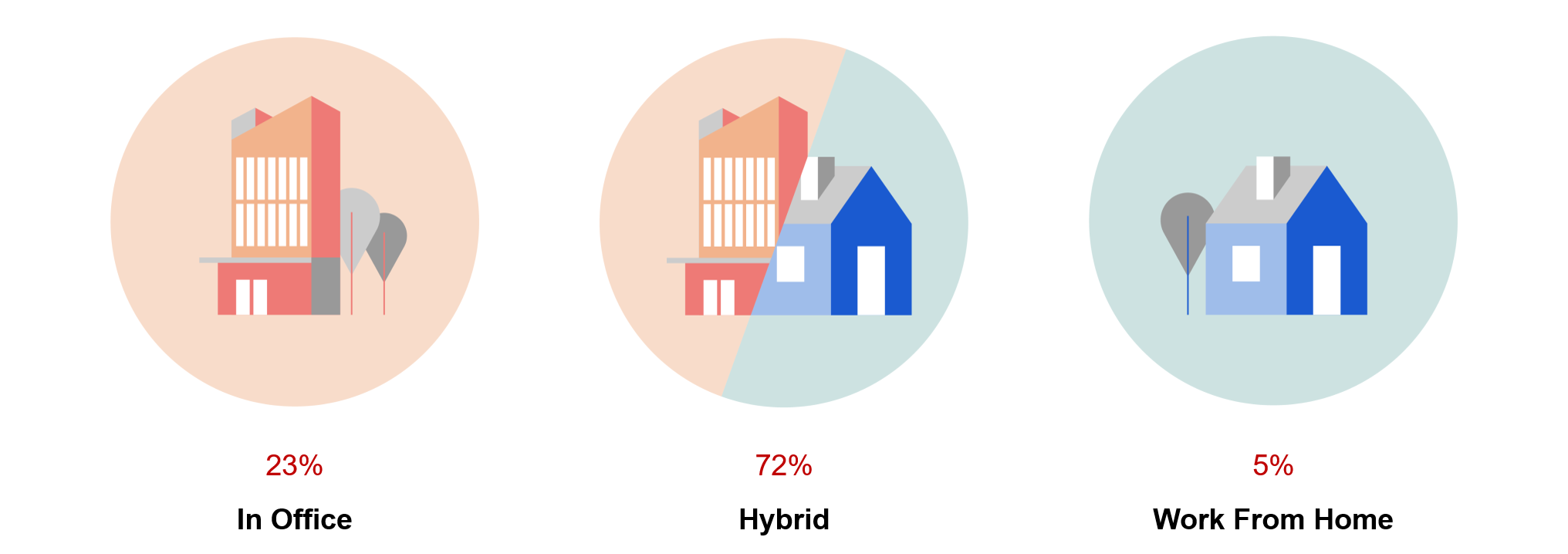We use cookies to make this site as useful as possible and maximize your experience. By closing this message, you consent to our cookies on this device in accordance with our cookie policy unless you have disabled them in your browser settings.
Discovering the Office of the Future Pt. 1

As we adapt to the new normal in the midst of a global pandemic, there are some aspects of the workplace that demand special adjustments. Some argue that the “standard” workforce will disappear entirely, making the traditional office setting obsolete. While the remote office is a thriving trend, new research suggests that the future of office space will cater to more hybrid settings—as opposed to total redundancy—as people begin to expect more flexibility and a variety of options from their employers.
Building a Flexible Work Space
What Will The Office of The Future Look Like?
After having spent months to a year working from home, people naturally now expect to be given the freedom to continue down this path. This will require that organizations both consider and challenge their own cultures, resources, and traditional practices. It will involve leaders making decisions based on what will work best for individuals, teams, and the organization overall.
Not everyone is on board with the idea of an entirely remote setup. A great majority of people say they intend to spend more time working in the office than at home and do not expect to work at home every day. In most countries, the majority say they expect to work from home one day a week or less.
The differences may also have a lot to do with geographic location and the professions involved. People in France and Germany, for example, which have strong office-based work cultures, are least likely to expect to work from home long-term. People in India and Mexico, on the other hand, expect to work from home more frequently.
Leaders Know That Change Is Coming
As more people expect to be able to work from home, leaders are listening and preparing. Early in the pandemic, many office environments did not anticipate a need to change policies, but now 87 percent of leaders around the world say they will offer more flexible options. It’s inevitable that things will continue to change and the data below shows that leaders are now more open to accommodating these changes based on the needs of their employees.

Work From Home Hybrid Solutions
New shifts in the work-from-home model reflect a hybrid solution that better serves the expectations of more people. Both employees and their leaders are seeking out more flexible options that provide more freedom to choose.
When asked in September 2020 what their expectations were for work post-pandemic, most leaders saw three main approaches: in-office, hybrid, or work-from-home. Most considered a hybrid model in which some time was spent in the office, and some was spent at home.

The number of organizational leaders expecting people to work from home exclusively only increased 2% globally since the onset of the pandemic. It appears nearly a quarter of all businesses will continue to work in the office as the primary destination, and the majority of organizations will take the hybrid approach to work.
Some organizations are considering other options beyond their primary offices. Given that the lack of commute seems to be the main reason people like working from home, organizations are exploring options for people to work closer to their homes, such as satellite offices or co-working facilities. Leaders who plan to embrace more flexible workspace solutions are considering a mix of buying, building, leasing or private co-working options.
Although times have already drastically changed for people in the workforce, there may be more adjustments to come. It’s important to stay flexible and equipped to handle the differences. Here at bkm we provide many options and services for the changes discussed above, including white-glove corporate relocation and installation services, workspace design, and technology solutions including advanced audio-visual systems. For more guidance check out our additional post-COVID resources, including guidance on beginning your own customized design consultation.
Feel free to contact us today at (858) 569-4700 or complete this contact form to receive a FREE risk assessment and floor plan analysis.
